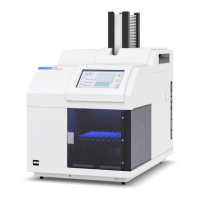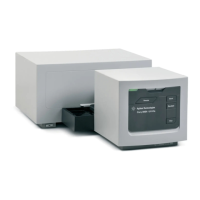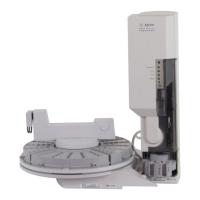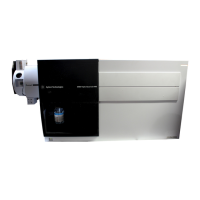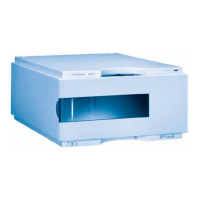5Methods
Operation Manual 93
TCD
Chemically active compounds reduce TCD filament life
The tungsten-rhenium TCD filament has been chemically passivated to protect against oxygen
damage. However, chemically active compounds such as acids and halogenated compounds
may attack the filament. The immediate symptom is a permanent change in detector
sensitivity due to a change in filament resistance.
If possible, such compounds should be avoided. If this is not possible, the TCD cell may have
to be replaced frequently.
Changing the TCD polarity during a run
Negative polarity On inverts the peak so the integrator or Agilent data system can measure it.
Negative Polarity can be a run table entry; see “Events”.
Detecting hydrogen with the TCD using helium carrier gas
Hydrogen is the only element with thermal conductivity greater than helium, and mixtures of
small amounts of hydrogen (<20%) in helium at moderate temperatures exhibit thermal
conductivities less than either component alone. If you are analyzing for hydrogen with helium
carrier gas, a hydrogen peak may appear as positive, negative, or as a split peak.
There are two solutions to this problem:
• Use nitrogen or argon-methane as carrier gas. This eliminates problems inherent with
using helium as carrier, but causes reduced sensitivity to components other than
hydrogen.
• Operate the detector at higher temperatures—from 200 °C to 300 °C.
You can find the correct detector operating temperature by analyzing a known range of
hydrogen concentrations, increasing the operating temperature until the hydrogen peak
exhibits normal shape and is always in the same direction (negative relative to normal
response to air or propane) regardless of concentration. This temperature also ensures high
sensitivity and linear dynamic range.
Because hydrogen peaks are negative, you must turn negative polarity on at appropriate times
so the peak appears positive.
Recommended Starting conditions
Table 8 Recommended starting conditions
Gas type Suggested flowrates
Carrier gas
(hydrogen, helium, nitrogen)
Packed: 10 to 60 mL/min
Capillary: 1 to 5 mL/min
Reference
(same gas type as carrier)
15 to 60 mL/min
Capillary makeup
(same gas type as carrier)
Packed: 2 to 3 mL/min
Capillary: 5 to 15 mL/min
Detector temperature

